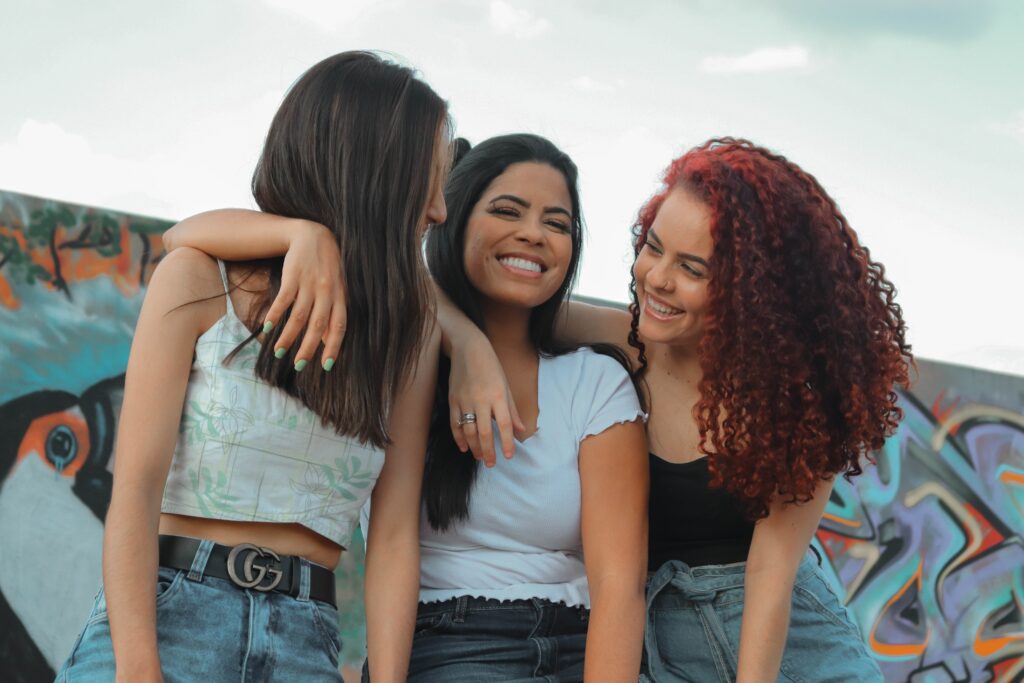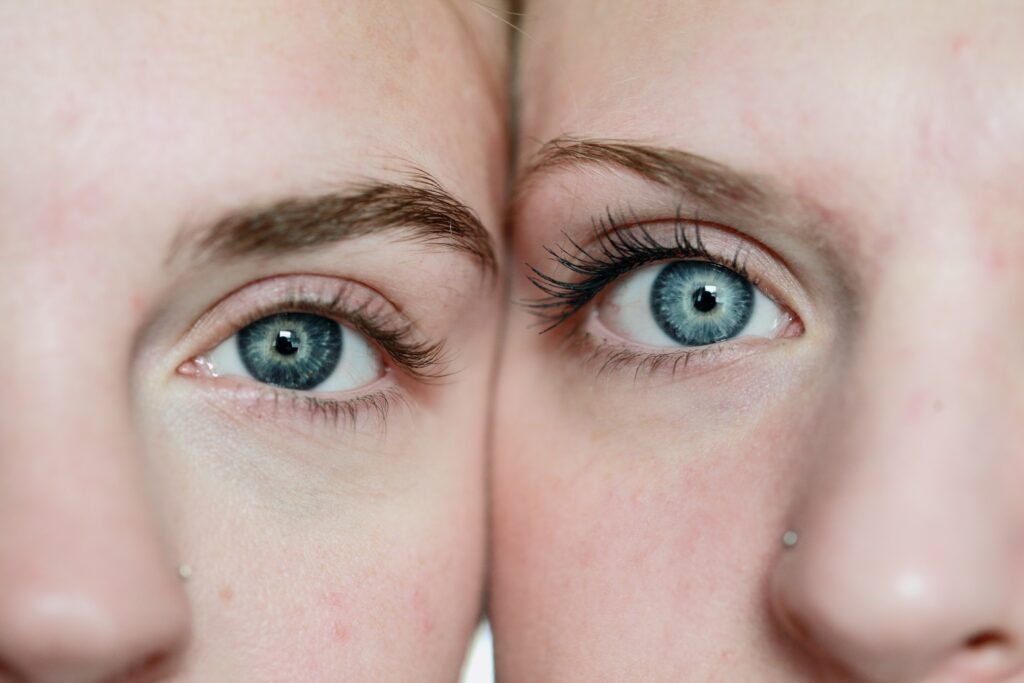Introduction
If you’re an introvert looking to connect more easily with others, mastering the art of eye contact is a crucial skill. Many introverts find making eye contact to be challenging, but it’s a powerful way to show confidence and build relationships. This post is here to help you learn how to make eye contact in a way that feels natural and comfortable. Importantly, this process doesn’t require a drastic introvert to extrovert transition; rather, it’s about developing your social skills while staying true to yourself. With a positive and analytical mindset, you’ll find that making eye contact can become second nature, helping you connect with others without feeling overwhelmed. So, let’s dive in and start this journey together, ensuring you have the tools you need to thrive in social interactions while maintaining your introverted nature.

The Importance of Eye Contact in Social Interactions
When it comes to social interactions, eye contact is more than just a simple glance; it’s a form of non-verbal communication that can speak volumes. For introverts, understanding and mastering this aspect of communication is crucial. It’s not just about making a good impression; it’s about building connections and expressing interest and attentiveness. However, we understand that diving straight into prolonged eye contact can be overwhelming. That’s why we encourage you to take our advanced introvert test to gauge your comfort levels and receive personalized advice tailored to your introverted nature.
Eye contact helps in establishing rapport and showing that you are engaged in the conversation. It can convey confidence, sincerity, and a host of other positive attributes. But for introverts, making eye contact doesn’t always come naturally. It might feel like a daunting task, and that’s perfectly okay. The goal here is not to transform you into an extrovert overnight, but to equip you with the tools to use eye contact to your advantage, in a way that feels authentic to you.
Maintaining the right amount of eye contact also plays a significant role in how others perceive you. Too little, and you might come across as disinterested or aloof; too much, and you risk making the other person feel uncomfortable. Finding that sweet spot is key, and it starts with understanding the significance of eye contact in forging connections.
By embracing the challenge and viewing eye contact as a skill that can be honed, you empower yourself to navigate social situations with greater ease. It’s a small change that can lead to a big impact, enhancing your ability to connect with others while staying true to your introverted nature. So, take a deep breath, and let’s embark on this journey together, unlocking the power of eye contact and transforming your social interactions for the better.

Introverts vs. Extroverts: Different Comfort Zones in Eye Contact
Navigating the world of eye contact can vary significantly depending on whether one identifies more as an introvert or an extrovert. Extroverts might find making eye contact comes naturally, using it instinctively to connect and communicate. For introverts, however, the experience can be quite different. The internal processing and reflective nature of introverts can sometimes make sustained eye contact feel intense or overwhelming. It’s important to acknowledge these differences and work within your comfort zone.
At the beginning of this exploration, we encourage you to join our intro to extro community, a space where individuals discuss and share their experiences and tips on this very topic. Connecting with others who are on the same journey can provide valuable insights and support.
Introverts often excel in observing and listening, paying close attention to details that others might miss. This skill can be an asset when it comes to reading non-verbal cues in others’ eye movements and expressions. By tuning into these subtle signals, introverts can navigate social interactions with a deep sense of understanding and empathy, all while maintaining a level of eye contact that feels comfortable for them.
However, it’s crucial to practice and gradually increase your tolerance to eye contact. Starting with brief glances and slowly working your way up can make a world of difference. Remember, it’s not about mimicking extroverted behavior; it’s about finding a balance that allows you to connect authentically with others, respecting your natural tendencies.
Embracing your introverted nature doesn’t mean shying away from eye contact altogether. Instead, it’s about leveraging your inherent strengths and learning to use eye contact as a tool for connection, not a source of discomfort. With practice, patience, and the right community support, mastering this skill can become a rewarding part of your personal growth journey.

Using Your Peripheral Vision to Ease into Eye Contact
Gaining comfort with eye contact doesn’t have to be a daunting task. One effective strategy for introverts is to start by utilizing your peripheral vision. This technique involves looking slightly to the side of the person’s face or focusing on a point near their eyes, instead of direct eye contact. It allows you to ease into the practice without the intensity that can sometimes come with direct gazes.
To delve deeper into strategies like these and more, we recommend exploring our unique intro to extro roadmap. This guide stands out from the rest, providing tailored advice and practical steps specifically designed for introverts looking to expand their comfort zones and enhance their social skills.
By using your peripheral vision, you can maintain a connection with the person you are interacting with, showing attentiveness and interest, without the potential discomfort that direct eye contact might bring. It’s a subtle shift, but it can make a significant impact on your ability to engage in social situations.
Practicing this method in low-stakes environments can help build your confidence gradually. Start with casual conversations with friends or family members, and pay attention to how it feels. You might notice a sense of ease and control that wasn’t there before.
However, it’s important to eventually work your way up to making direct eye contact, even if it’s just for short bursts at a time. The goal is not to avoid eye contact altogether but to find a balance that works for you. This balance should allow you to connect with others authentically, showing that you are present and engaged, while still honoring your introverted nature.
Utilizing your peripheral vision is just one of many strategies that can help. By incorporating these practices into your interactions, you’ll be on your way to mastering the art of eye contact, at your own pace, and on your own terms.

Dating and Relationships: Eye Contact for Introverted Lovers
In the realm of dating and relationships, eye contact takes on a crucial role, serving as a bridge of intimacy and connection between partners. For introverts, navigating this intimate aspect of communication can seem complex, but with the right approach, it can become a profound way to express affection and understanding.
Building a romantic connection requires a delicate balance of openness and boundary-setting. Eye contact becomes a non-verbal language, conveying emotions and interest. For introverts, this can be a potent tool, allowing them to communicate depth and sincerity without the need for extensive verbal interaction. It’s about creating a shared space of understanding, where words become secondary to the language of the eyes.
However, it’s essential to approach eye contact in relationships with mindfulness and awareness. Introverts may find prolonged eye contact intense, making it necessary to gauge both their comfort level and their partner’s. Paying attention to non-verbal cues can guide when to hold eye contact and when to give space, ensuring both partners feel seen and respected.
Introverted lovers can practice eye contact during moments of shared silence or while expressing affection, using these moments to strengthen their emotional connection. It’s about finding the moments where eye contact feels natural and enriching to the relationship, rather than forced or overwhelming.
In dating scenarios, eye contact can also be a valuable tool for introverts. It can signal interest and attraction, helping to establish a connection without the need for extensive small talk. By mastering the art of eye contact, introverts can navigate the dating world with confidence, using their depth and authenticity to form meaningful connections.
In both dating and long-term relationships, mastering eye contact allows introverted individuals to express their emotions and connect on a deeper level, fostering intimacy and understanding in their romantic interactions.
When to Break Eye Contact: Understanding Social Cues
Mastering eye contact involves not just knowing when to hold someone’s gaze, but also recognizing when to look away. For introverts, who are often highly observant and attuned to subtleties, understanding these social cues is crucial for comfortable and effective communication.
Breaking eye contact at the right moments can prevent interactions from becoming too intense, especially in situations where sensitivity and empathy are required. It’s a skill that can create a balanced conversation, making others feel heard and understood, without the pressure of constant eye contact. Observing the other person’s body language and responses will provide clues on when it might be appropriate to momentarily divert your gaze.
Introverts may naturally find themselves looking away to gather their thoughts or process information during a conversation. This inclination is completely fine, as long as it’s balanced with moments of eye contact to maintain connection and show engagement. The key is to strike a harmonious balance, ensuring that your communication style is considerate of both your needs and the comfort of others.
Building awareness of social contexts and individual comfort levels will enhance your ability to navigate these interactions with grace. In group settings, distributing your eye contact among different individuals can foster inclusivity, while in one-on-one conversations, paying attention to the ebb and flow of eye contact can create a more intimate and comfortable exchange.
Practicing mindfulness during interactions, and reflecting on what feels right for you, will develop your ability to use eye contact effectively. This introspective approach allows introverts to honor their unique communication style, while still engaging in meaningful and connected interactions.
By mastering when to hold eye contact and when to break it, introverts can communicate with confidence, ensuring that their interactions are both comfortable and impactful.
Practical Tips for Making Eye Contact without Feeling Overwhelmed
Achieving a comfortable level of eye contact is an attainable goal for introverts, and it starts with practical, manageable steps. While diving into the world of eye contact might seem daunting at first, incorporating these tips into your daily interactions can make the process feel less overwhelming.
- Start Small: Begin with brief moments of eye contact, gradually increasing the duration as you become more comfortable. This incremental approach prevents you from feeling overwhelmed.
- Practice with Familiar Faces: Engaging in eye contact during conversations with trusted friends or family members can create a safe space for practice, easing you into the process.
- Use the 50/70 Rule: Aim to make eye contact 50% of the time while speaking and 70% while listening. This guideline helps to strike a balance, ensuring that you remain engaged without feeling pressured to maintain constant eye contact.
- Take Breaks: Give yourself permission to look away and take breaks during interactions. Use these moments to gather your thoughts and prevent feelings of intensity.
- Focus on One Eye: If making eye contact with both eyes feels too intense, try focusing on just one eye. This slight adjustment can make a significant difference in your comfort level.
- Practice with Yourself: Spend a few minutes each day making eye contact with yourself in the mirror. This self-practice helps to normalize the experience, making it feel more natural during real interactions.
- Remember the Purpose: Keep in mind that the goal of eye contact is to connect and communicate effectively. Reminding yourself of this purpose can help to alleviate anxiety and place the focus on the interaction itself.
- Be Kind to Yourself: Recognize that mastering eye contact is a process, and it’s okay to take it at your own pace. Be patient with yourself, and celebrate the progress you make along the way.
By incorporating these practical tips into your daily interactions, eye contact can become a less daunting aspect of communication, allowing you to connect with others authentically and comfortably.
Conclusion
In conclusion, mastering the art of eye contact as an introvert is not about transforming into someone you’re not, but rather, embracing your unique approach to communication and enhancing it. Eye contact serves as a powerful tool in building connections, expressing sincerity, and navigating the world of social interactions with confidence. By starting small, practicing with familiar faces, and understanding the balance between holding and breaking eye contact, you can gradually increase your comfort level. Remember, it’s okay to take breaks and proceed at your own pace. The key is to be patient with yourself, recognizing each step forward in this journey of personal growth and improved communication.
Acknowledging the differences between introverts and extroverts in their comfort zones with eye contact, and utilizing strategies like peripheral vision, can make the process feel more natural and less overwhelming. In specific contexts such as dating and relationships, eye contact takes on a special significance, acting as a non-verbal expression of affection and understanding. By paying attention to social cues and practicing mindfulness in your interactions, you can navigate these moments with ease and authenticity.
Incorporate these practical tips into your daily life, and watch as eye contact becomes a tool for connection rather than a source of discomfort. This journey is about finding balance, enhancing your ability to communicate, and connecting with others while staying true to your introverted nature. So embrace the challenge, celebrate your progress, and discover the empowering world of eye contact made comfortable for introverts.




